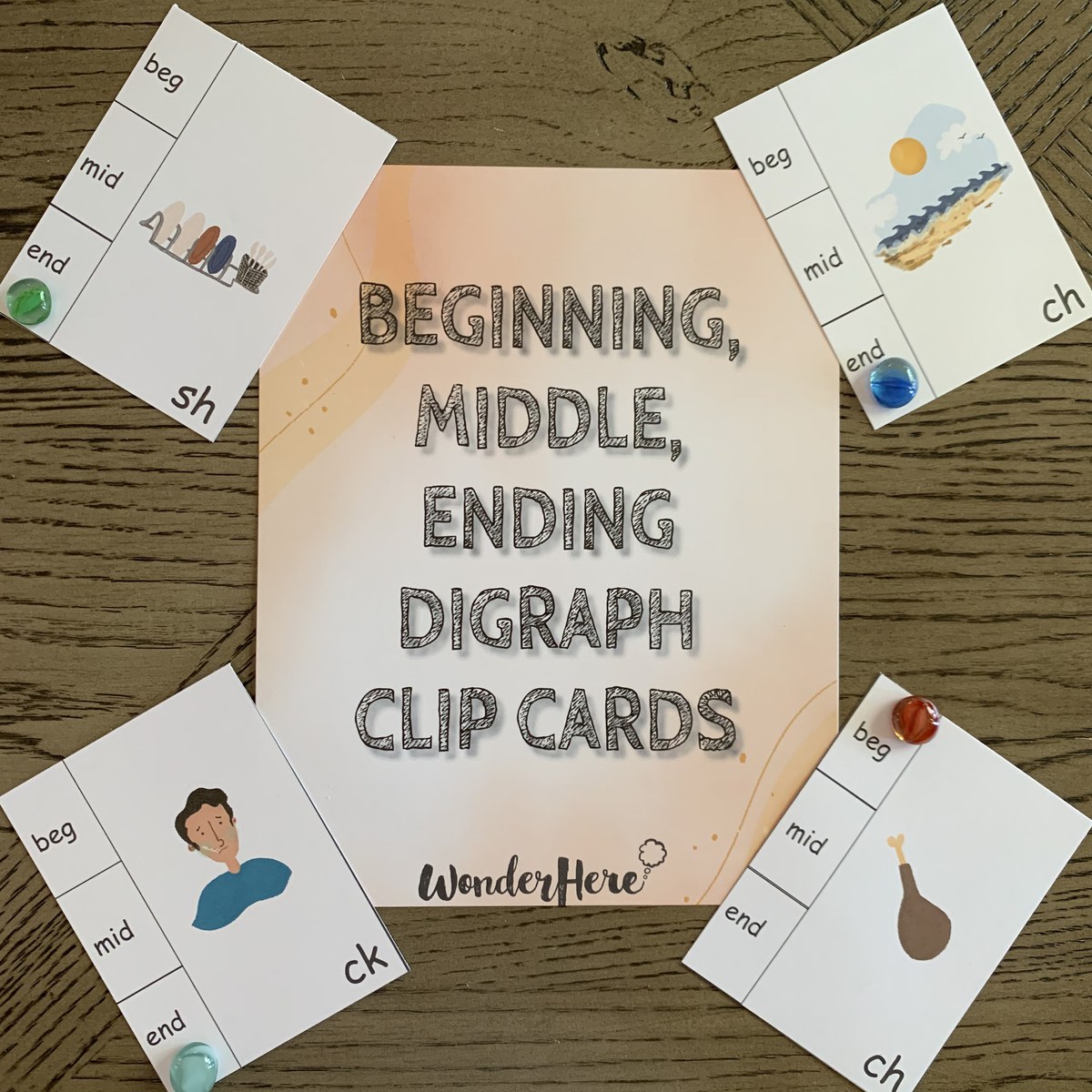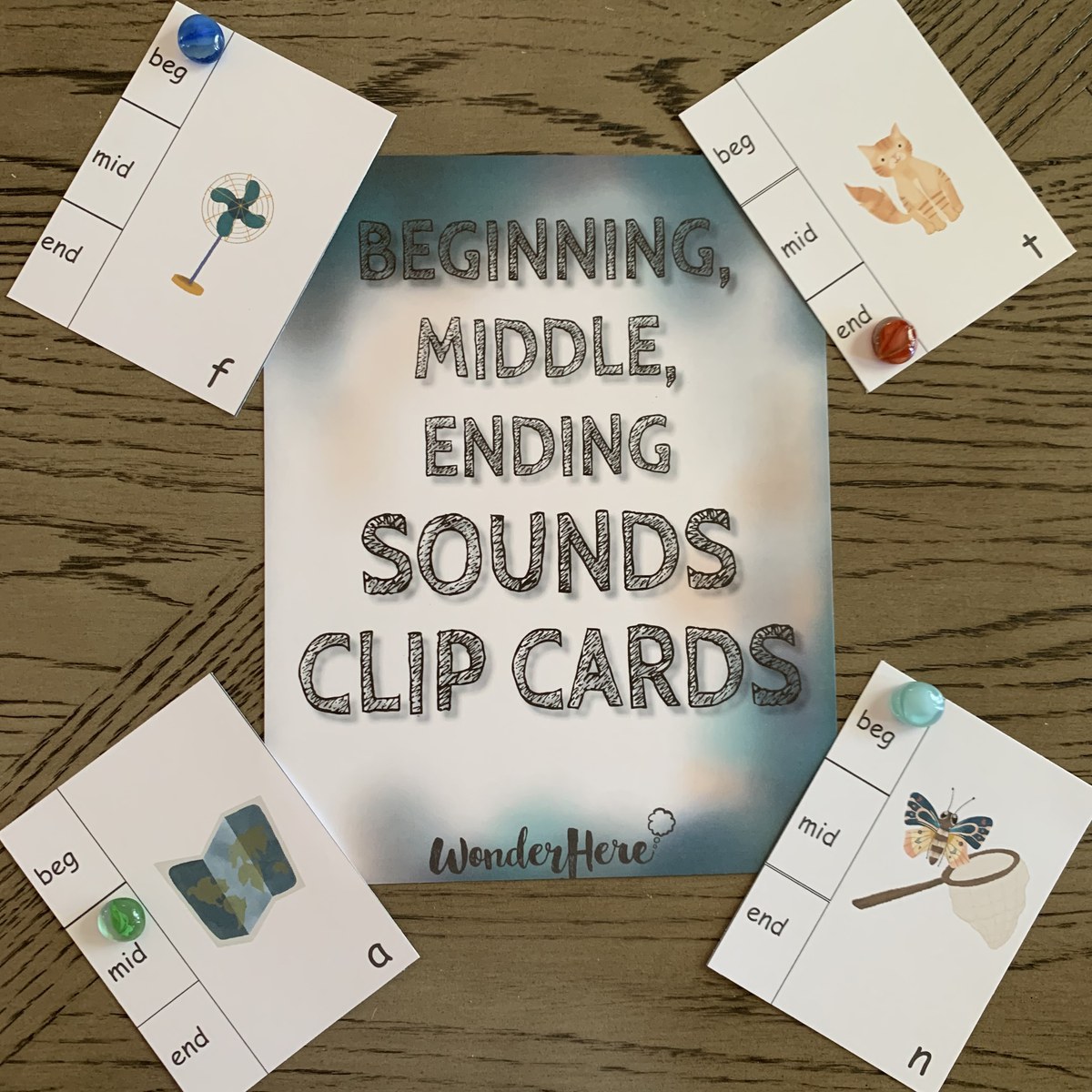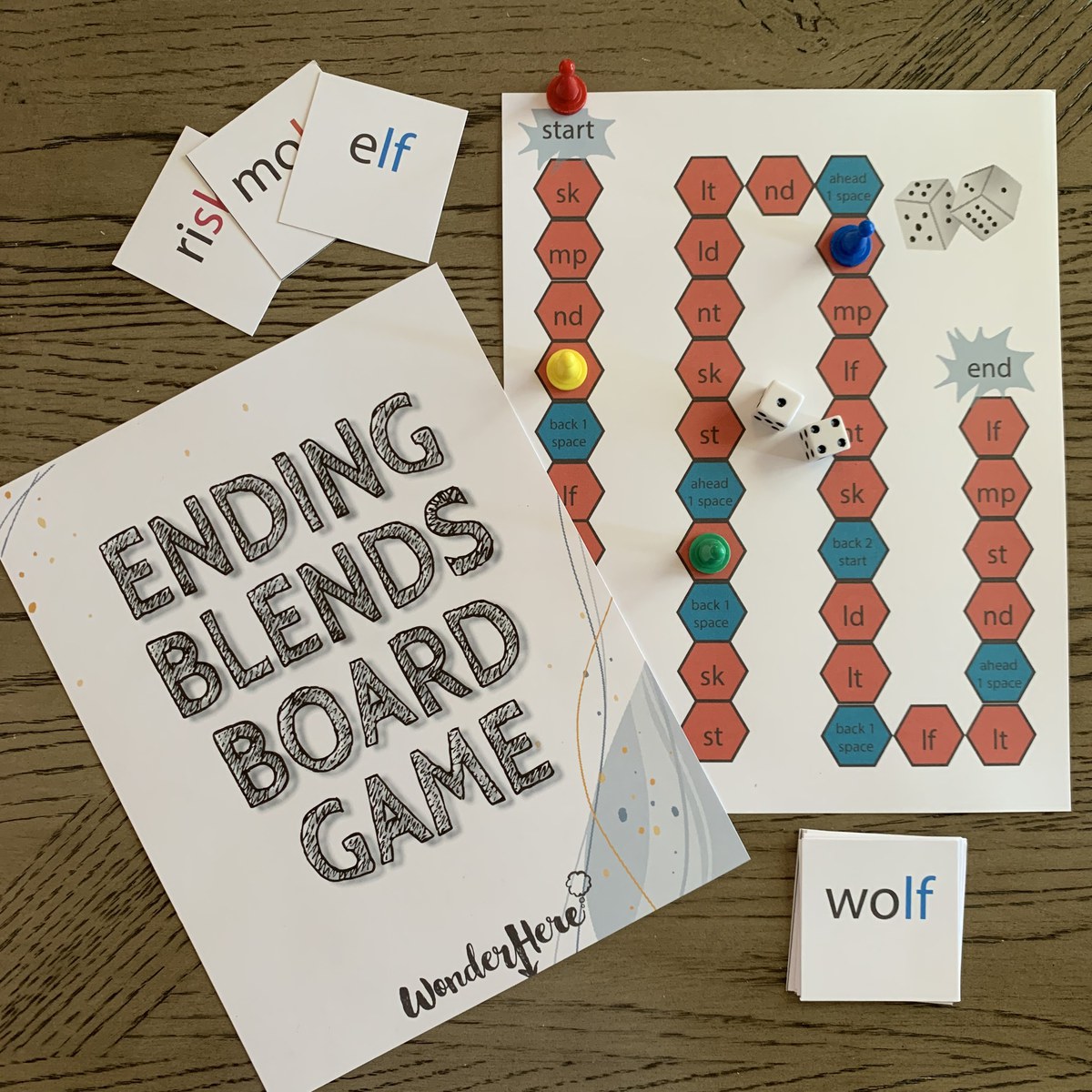Isn’t it incredible how many of us probably don’t remember how we learned to read, yet reading is such an integral part of our lives as adults? You know who probably DOES remember?… our parents and teachers! Teaching a child to read can either be a stress-inducing right-of-passage… or can actually be a fun and peaceful process filled with memories. It’s also okay if you land somewhere in between 😉 These three activities are designed to help children learn to read through decoding sounds in a simple, colorful, fun, and peaceful way. Check them out!
Beginning, Middle, and Ending Digraph Clip Cards
The Beginning, Middle, Ending Digraph Clip Cards are a perfect and simple way for continuing digraph sounds with an emerging reader through beautifully hand-drawn illustrations! This includes 12 Clip Cards, reviewing digraph sounds: “th”, “sh”, “ch”, “ng”, and “ck”!
 To prepare, print the cards out on card stock. Cut out and laminate the cards for durability. The goal is for the child to practice not only the digraph sound, but also isolating where it is heard when a word is read aloud. The child will say aloud each picture word on the card, then say aloud the digraph sound written on the card, and clip “beg” “mid” or “end” depending on where the digraph sound is heard in the word. For example; “three” /th/ is heard at the beginning of the word.
To prepare, print the cards out on card stock. Cut out and laminate the cards for durability. The goal is for the child to practice not only the digraph sound, but also isolating where it is heard when a word is read aloud. The child will say aloud each picture word on the card, then say aloud the digraph sound written on the card, and clip “beg” “mid” or “end” depending on where the digraph sound is heard in the word. For example; “three” /th/ is heard at the beginning of the word.
Clip cards are a great way to reinforce fine motor strength, but to mix it up, the child could also use a white board marker (if cards are laminated) and color in the “beg”, “mid”, or “end” box OR use pom-poms or other small marker pieces and place on top of the correct box.
These Digraph Clip Cards are a beautiful way for your child to practice both, sound isolation AND digraph sounds in a fun way!
Beginning, Middle, and Ending Sound Clip Cards
These Beginning, Middle, and Ending Sound Clip Cards are a great activity for continuing letter sound practice with a beginning reader. They have beautiful hand drawn illustrations and are fun and simple for a child to do for independent practice!
 To prepare, print out the 12 clip cards included onto cardstock. Cut out and laminate cards for durability. The goal is for the child to practice not only their letter sounds, but also isolating where the sound is heard in a word. The child will say aloud the picture on each card, say aloud the letter sound on each card, and then clip where that sound is found. For example; “sun” /n/ is heard at the end of the word.
To prepare, print out the 12 clip cards included onto cardstock. Cut out and laminate cards for durability. The goal is for the child to practice not only their letter sounds, but also isolating where the sound is heard in a word. The child will say aloud the picture on each card, say aloud the letter sound on each card, and then clip where that sound is found. For example; “sun” /n/ is heard at the end of the word.
Clip cards are also a wonderful way to strengthen fine motor skills! To mix it up, a child could also place a pom-pom, or other small marker piece on each box OR (if the cards are laminated,) the child could use a white board marker to color in the correct box. This ability to isolate sounds in a word is a pre-reader and developmental skill that a child must master to read and spell words. These clip cards are a fun way to practice!
For an extension, or challenge, the child could also use a movable alphabet set, or other alphabet tiles, to build and spell each word on the cards after clipping the letter sound, as a way to check their answer.
This board game is such a fun way for a child to practice ending sounds and blends! The beautiful part of literacy board games is children don’t realize how much they are still learning because they are enjoying playing the game! Play has been proven to be an essential part of a child’s development. Board games are a great way to build social skills, sportsmanship, and when literacy is included, a fun way to practice foundational reading skills!
 To prepare, print the game board and game cards on cardstock. Cut out the game cards and laminate cards and game board for durability. Not included but also needed: a die and small game pieces.
To prepare, print the game board and game cards on cardstock. Cut out the game cards and laminate cards and game board for durability. Not included but also needed: a die and small game pieces.
To play the game, place cards into separate piles based on the ending sounds. Player 1 will roll the die then move that many spaces on the game board. Player 1 must then pick a card from the ending sound stack associated with the space landed on. They must follow the instructions of any space other than an ending sound space, such as “go back 1 space.” The next player(s) will follow above instructions. The first player to reach the end of the game board wins.
To extend the length of the game, or another fun variation to play, is to keep score based on the number of words/cards collected and continue playing the game until a number goal has been reached. For example: continue playing the game over and over (replacing and reshuffling cards as needed but keeping track of count) until an individual player has reached 20 words, or 50 words, etc.
We hope these activities bring some fun and peacefulness into your learning routine. If you use them, post a photo and tag us! Don’t forget to use #wewonderhere! We’d love to see and repost all of your beautiful learning.

